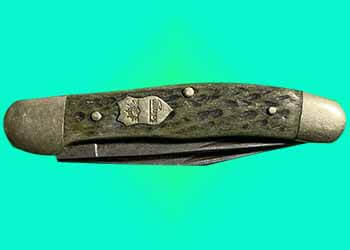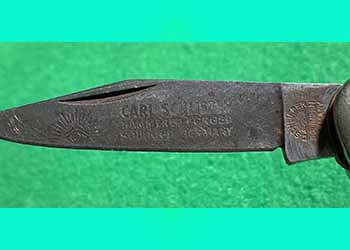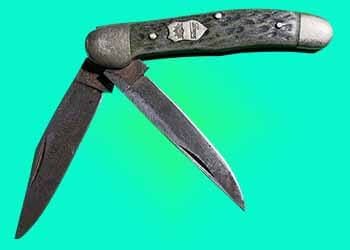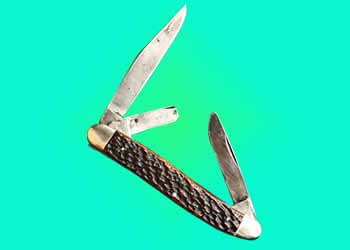Are you a collector of Carl Schlieper knives and wondering how to date your knife? Understanding the age and history of your knife can provide insight into its value and rarity. However, dating a Carl Schlieper knife can be challenging since the company has been out of business for some time. But with a little bit of research and knowledge about the identifying characteristics of Carl Schlieper knives, you can determine the age of your knife. In this article, we will guide you through the process of How to Date a Carl Schlieper Knife? The process includes identifying characteristics, researching the historical timeline, and tips for valuing and collecting Carl Schlieper knives.
How to Date a Carl Schlieper Knife?
Identifying Characteristics of Carl Schlieper Knives


Carl Schlieper knives are known for their high quality and craftsmanship, but identifying their age can be challenging. However, there are some identifying characteristics that can help you determine the age of your knife. These characteristics include the tang stamp, blade markings, handle characteristics, and overall condition of the knife.
Tang Stamp – The tang stamp is an important identifying characteristic of a Carl Schlieper knife. It is a stamp that is located on the metal portion of the knife blade, which includes the company name, logo, and pattern number. The tang stamp can provide information about when the knife was made and the specific pattern that was in production during that time.
Blade Markings – Blade markings can also help identify the age of a Carl Schlieper knife. Some knives have a year stamped on the blade, indicating the year of manufacture. Other markings can include the model number, serial number, and other identifying information.
Handle Characteristics – Handle characteristics can also provide clues about the age of a Carl Schlieper knife. Different handles were used during different production runs, so the type of handle can help determine the age of the knife. For example, older knives may have bone or ivory handles, while newer knives may have plastic or synthetic handles.
Overall Condition – The overall condition of the knife can provide insight into its age. Older knives may show signs of wear and tear, while newer knives may be in pristine condition. Additionally, the type of blade and handle material can also help determine the age of the knife.
By examining these identifying characteristics, you can gain a better understanding of the age and history of your Carl Schlieper knife.
Related: How to Date a Kissing Crane Knife?
The Historical Timeline of Carl Schlieper Knives

Carl Schlieper knives have a rich history that spans several decades, and understanding the historical timeline of the company can provide valuable insight into the age of your knife. Here is a brief overview of the history of Carl Schlieper knives:
The company was founded in Solingen, Germany in the late 19th century by Carl Schlieper. The company was known for producing high-quality knives and cutlery using traditional German craftsmanship techniques.
During the early years of production, Carl Schlieper knives were marked with the name “Eye Brand” and a distinctive eye-shaped logo. These knives were often made with bone or ivory handles and were prized for their durability and sharpness.
In the 1930s, Carl Schlieper knives began to be marked with the name “Carl Schlieper” or “C. Schlieper”. These knives were often made with stag horn handles and featured a wide range of blade styles and sizes.
During World War II, Carl Schlieper knives were in high demand and were produced for the German military. Knives produced during this time often had the Nazi eagle and swastika emblem stamped on the blade.
After the war, Carl Schlieper knives continued to be produced, but the company faced increasing competition from other manufacturers. The company eventually went out of business in the late 20th century.
Today, Carl Schlieper knives are highly collectible and are prized for their historical significance and quality craftsmanship. By understanding the historical timeline of the company, you can gain a better understanding of the age and value of your Carl Schlieper knife.
Researching the Age of a Carl Schlieper Knife

Researching the age of a Carl Schlieper knife can be a challenging process, but there are several resources that can help you determine the age and historical significance of your knife.
One of the first resources to check is a knife collector’s guide or reference book. These books often include detailed information about Carl Schlieper knives, including the identifying characteristics and production timeline. By comparing the identifying characteristics of your knife to those listed in the guide, you can often determine the age and production year of your knife.
Another resource is online knife forums and collector communities. These forums can be a valuable source of information, as collectors often share their knowledge and expertise about specific knife brands and models. You can post photos of your Carl Schlieper knife and ask for help identifying its age and historical significance.
If you have access to the knife’s original packaging or paperwork, this can also provide valuable information about its age and production year. The packaging may include a year or date stamp, or information about the specific model or production run.
Finally, it may be helpful to consult with a professional knife appraiser or collector. These individuals have years of experience in evaluating and appraising knives and can provide valuable insights into the age and value of your Carl Schlieper knife.
By utilizing these resources and conducting thorough research, you can gain a better understanding of the age and historical significance of your Carl Schlieper knife.
Collecting and Valuing Carl Schlieper Knives
Collecting and valuing Carl Schlieper knives can be a rewarding hobby for knife enthusiasts and collectors. Here are some tips for collecting and valuing Carl Schlieper knives:
- Research the history and production of Carl Schlieper knives. Understanding the history of the company and the production timeline can help you identify rare or valuable knives.
- Look for knives that are in good condition. Knives that are in pristine condition, with no signs of wear and tear, are often more valuable than those that show signs of use or damage.
- Consider the rarity and rarity of the knife. Knives that are rare or produced in limited runs may be more valuable to collectors.
- Look for knives with unique features or markings. Knives with unique blade markings, handles, or tang stamps may be more valuable than those with standard features.
- Consult with knife appraisers or collectors. These individuals have years of experience in valuing and appraising knives and can provide valuable insights into the value of your Carl Schlieper knife.
When it comes to valuing Carl Schlieper knives, there are several factors to consider. These include the age and rarity of the knife, the condition of the knife, and any unique features or markings. Additionally, market demand and collector interest can also impact the value of a Carl Schlieper knife.
Ultimately, the value of a Carl Schlieper knife is determined by the buyer and seller in a specific market. However, by conducting thorough research and understanding the key factors that impact knife value, you can make informed decisions about collecting and valuing Carl Schlieper knives. Know more.
Final Words
In conclusion, Carl Schlieper knives have a rich history and are highly sought after by collectors for their quality craftsmanship and historical significance. Understanding the identifying characteristics and historical timeline of the company can help you determine the age and value of your Carl Schlieper knife. Additionally, researching and consulting with knife appraisers and collectors can provide valuable insights into the value of your knife. Whether you are a seasoned collector or a beginner, collecting and valuing Carl Schlieper knives can be a rewarding and fulfilling hobby.
Read More:

